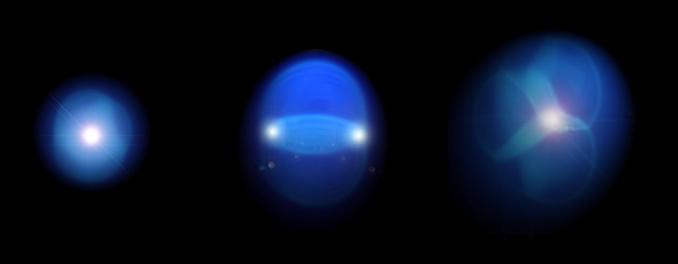[dropcap style=”font-size:100px;color:#992211;”]R[/dropcap]esearchers have created tiny droplets of the ultra-hot matter that once filled the early universe, forming three distinct shapes and sizes: circles, ellipses and triangles.
The study stems from the work of an international team of scientists and focuses on a liquid-like state of matter called a quark gluon plasma. Physicists believe that this matter filled the entire universe during the first few microseconds after the Big Bang when the universe was still too hot for particles to come together to make atoms.
CU Boulder professor Jamie Nagle and colleagues on an experiment known as PHENIX used a massive collider at Brookhaven National Laboratory in New York to recreate that plasma. In a series of tests, the researchers smashed packets of protons and neutrons in different combinations into much bigger atomic nuclei.
They discovered that, by carefully controlling conditions, they could generate droplets of quark gluon plasma that expanded to form three different geometric patterns.
“Our experimental result has brought us much closer to answering the question of what is the smallest amount of early universe matter that can exist,” Nagle said.
Researchers from CU Boulder and Vanderbilt University lead the data analysis efforts for the PHENIX experiment.
Scientists first started studying such matter at Brookhaven’s Relativistic Heavy Ion Collider (RHIC) in 2000. They crashed together the heavy nuclei of gold atoms, generating temperatures of trillions of degrees Celsius. In the resulting boil, quarks and gluons, the subatomic particles that make up all protons and neutrons, broke free from their atomic chains and flowed almost freely.
Several years later, another group of researchers reported that they seemed to have created a quark gluon plasma not by slamming together two atoms, but by crashing together just two protons. That was surprising because most scientists assumed that lone protons could not deliver enough energy to make anything that could flow like a fluid.
Nagle and his colleagues devised a way to test those results in 2014: If such tiny droplets behaved like liquid, then they should hold their shape. As he explained, “Imagine that you have two droplets that are expanding into a vacuum. If the two droplets are really close together, then as they’re expanding out, they run into each other and push against each other, and that’s what creates this pattern.”
In other words, if you toss two stones into a pond close together, the ripples from those impacts will flow into each other, forming a pattern that resembles an ellipse. The same could be true if you smashed a proton-neutron pair, called a deuteron, into something bigger, Nagle and Romatschke reasoned. Likewise, a proton-proton-neutron trio, also known as a helium-3 atom, might expand out into something akin to a triangle.
And that’s exactly what the PHENIX experiment found: collisions of deuterons formed short-lasting ellipses, helium-3 atoms formed triangles and a single proton exploded in the shape of a circle.
The results, the researchers said, could help theorists better understand how the universe’s original quark gluon plasma cooled over milliseconds, giving birth to the first atoms in existence.
Source: EurekAlert!

Naila Scargill is the publisher and editor of horror journal Exquisite Terror. Holding a broad editorial background, she has worked with an eclectic variety of content, ranging from film and the counterculture, to political news and finance.




















